Psycho-Emotional Abuse: The Essential Guide was made to provide you with greater knowledge of this fundamental component of narcissistic abuse.
This information will give you a clear understanding of:
- What is psycho-emotional abuse?
- Other definitions of the concept
- Characteristics
- Causes
- Consequences
- Comparisons with Coercive Control
Let’s get started.
What is psycho-emotional abuse?
Psycho-emotional abuse describes any non-physical pattern of behavior that intentionally harms an individual’s mental state and undermines their ability to reach their full potential. It is a portmanteau of psychological and emotional abuse.
This kind of abuse can occur within a variety of contexts. For example, it can take place in intimate partner relationships, in family relationships, in friendships, in the workplace, etcetera.
Above all it is used to manipulate and control another person or people.
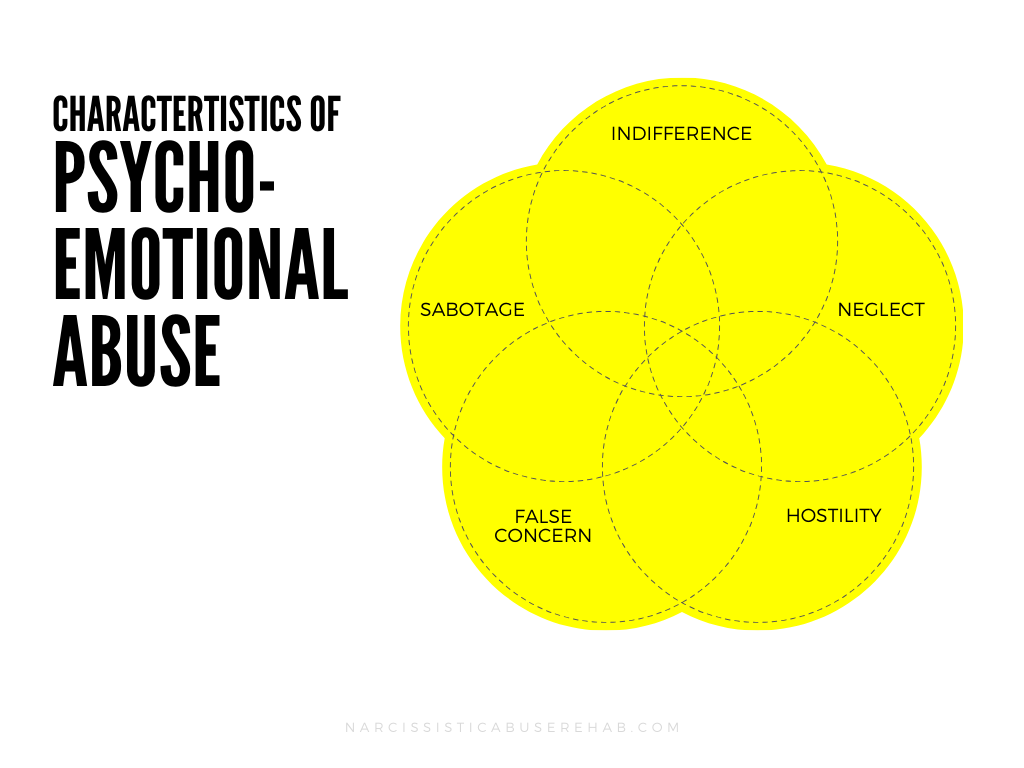
Other definitions of psycho-emotional abuse
Dr. Marti Tamm Loring defines psycho-emotional abuse as, “An ongoing process in which one individual systematically diminishes and destroys the inner self of another.”
Professor Dorota Iwaniec describes it as hostile or indifferent behavior which:
- Damages the individual’s self-esteem,
- Debases their sense of achievement,
- Diminishes their sense of belonging,
- Prevents their healthy and vigorous development, and
- Takes away the individual’s well-being.
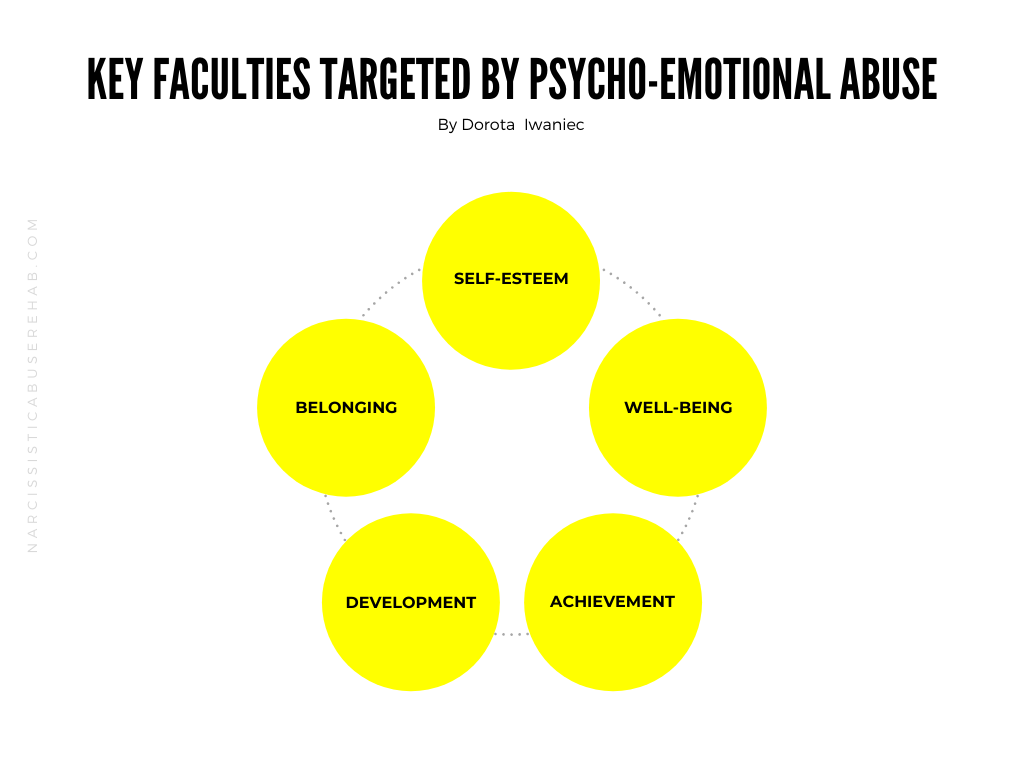
Characteristics of psycho-emotional abuse
Psycho-emotional abuse is subtle and can be tricky to spot – even by the person experiencing it!
Abusers often disguise their malice as good intentions, which confuses the person they target and deceives most bystanders.
At times, the aggression is overt and takes place in front of witnesses. However, in these instances most people do not understand the nature of this kind of aggression and so they fail to recognize that abuse is taking place.
Some of its characteristics are:
- It is a pattern of behavior.
- The harm it causes is deliberate and intentional.
- The target experiences the behavior as harmful.
- The abuse may be overt or covert.
- It may or may not occur in the context of conflict.
- It may not immediately seem aggressive.
- The aggressor may camouflage the abuse as caring, love, or humor.
- The targeted person’s vulnerabilities are exploited to cause them to feel confused, insecure, and unsure of themselves.
- It may manifest as neglect.
- The abuse causes harm to the targeted individual’s well-being.
Abusers are cunning enough to understand that psychological abuse is a bloodless crime which usually enables them to escape accountability for the harm and devastation they cause.
This is because the theatre of the abuser’s aggression is not visible to the naked eye.
While the recipient of the abuse has no physical symptoms, the emotional wounds may be catastrophic.
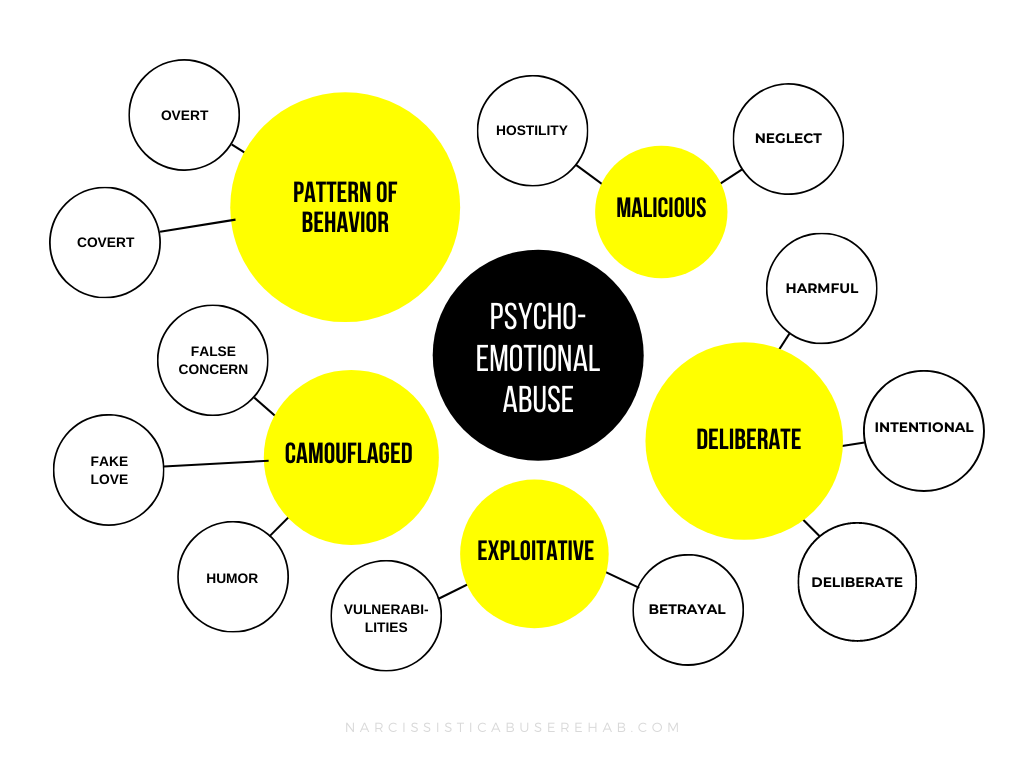
What causes psycho-emotional abuse?
There are many reasons why psycho-emotional abuse may occur. The abuser’s behavior is often rooted in envy, fragility, and aggression.
A common occurrence is when an aggressive and/or narcissistic person feels intimidated by the presence of someone who they believe has qualities or privileges they do not. They may seek to resolve these painful feelings by asserting dominance over the person they regard as a threat.
In some instances, the abuser is externalizing their toxic shame and placing their burden on the victim. In this way, the abuse strips away the authentic identity of the target and assigns to them a new one that encompasses the parts of the abuser’s persona which they despise and reject.

What are the effects of psycho-emotional abuse?
The cumulative effect of psycho-emotional abuse is the erosion of the recipient’s self-worth and trust in their judgment.
Some of the specific consequences may include:
- Confusion
- Self-blame
- Depression
- Inability to concentrate
- Lack of motivation
- Procrastination
- Low self-esteem
- Fear of failure
- Hopelessness
- Worthlessness
- Self-sabotage
Abusers often compound the damage they do by refusing to recognize the right of the targeted person to feel hurt, wronged, or angry. They use a variety of tactics to convince the person they target that they brought the abuser’s aggression on themselves.
They defend their aggression and escape accountability through the process of scapegoating. This is done by using the targeted individual’s vulnerability to excuse the abuse. By blaming the person they victimize, they absolve themselves of any wrongdoing.
Abusers often silence targets by using threats and intimidation. They enlist agents to gang up on the target. The result is that the targeted individual may experience fear, anxiety, dread, and panic.
Prolonged psycho-emotional abuse can lead to adverse health outcomes. It may cause chronic anxiety which can impact the targeted person’s physical and psychological well-being. Over time, this may cause depression, complex post-traumatic stress, and auto-immune disorders.
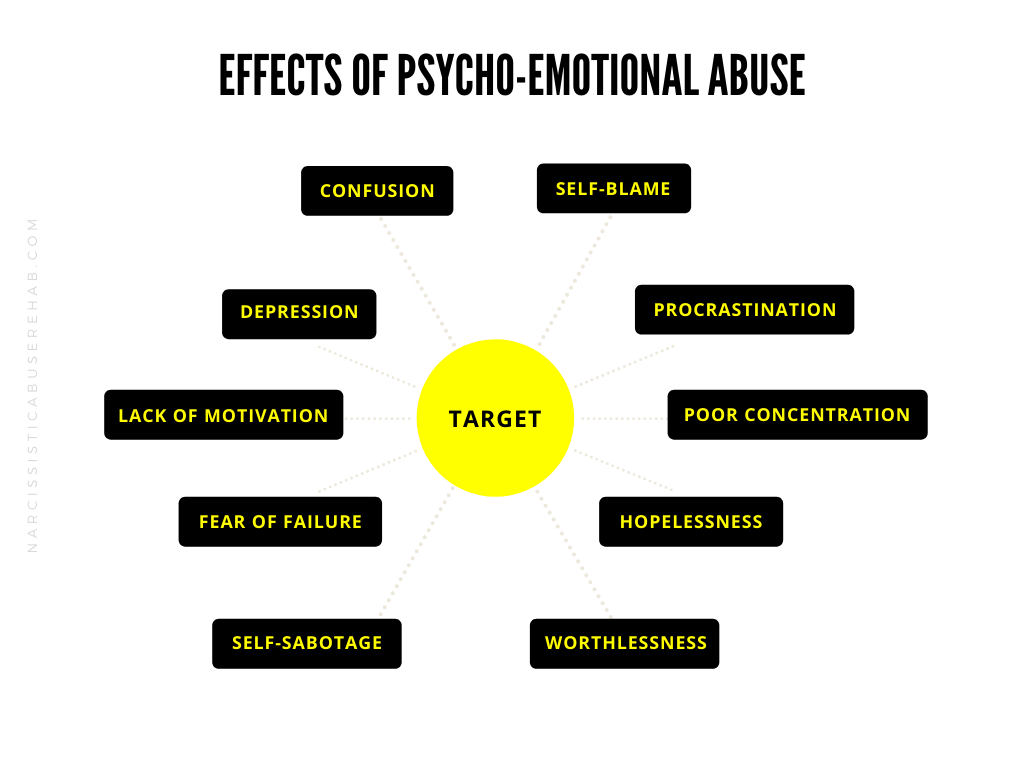
Comparisons to Coercive Control
Coercive control and psycho-emotional abuse utilize dominance tactics with common features, yet they represent two distinct concepts. Dr. Evan Stark defines coercive control as the entrapment and subjugation of women. In his view, it is an extreme kind of gender-based used by misogynists to prevent women from personal development, expression, and the exercise of their rights as human beings and citizens. It may include isolation, monitoring, sexual abuse, financial abuse, and physical violence. According to Dr. Stark, what makes coercive control distinct is that it goes beyond the scope of psycho-emotional abuse and is more akin to hostage-taking and kidnapping.
Forensic criminologist Dr.Jane Monckton Smith of Gloucestershire University clarifies the difference between psycho-emotional abuse and coercive control by explaining that the latter is a unique phenomenon due to factors such as entrapment and the threat of harm or death should the victim leave the relationship.
“We must stop characterizing coercive control only as psychological abuse. Psychological abuse is a method used by controlling people to exert and maintain control. Coercive control is a campaign made up of any or all of these things which then trap people in a relationship, and make it impossible or dangerous to leave.”
In France, coercive control is called l’emprise psychologique and it has had legal status since 2010. The United Kingdom recognizes coercive control as criminal behavior and legislation prohibiting it came in to force in 2015. The legislation is gender-neutral and applies to anyone experiencing this form of abusive power and control. On March 1, 2021, Ontario became the first Canadian province to criminalize coercive control The Kingdom of Sweden recognizes coercive control as the crime våld i nära relationer.
Bibliography
- Loring, Marti Tamm. “Emotional Abuse: the Trauma and Treatment.” San Francisco, CA: Jossey Bass Publishers, 1998.
- Iwaniec, Dorota. “The Emotionally Abused and Neglected Child Identification, Assessment and Intervention; a Practice Handbook.“ Chichester: Wiley, 2008.
- Strecker, Peter John. “I Wish That He Hit Me: The Experiences of People Who Have Been Psychoemotionally Abused and Have Psychoemotionally Abused Others.” Victoria University, March 2012.
- Stark, Evan. “Coercive Control: How Men Entrap Women in Personal Life.“ New York: Oxford University Press, 2009.
- Monkcton Smith, Jane. “Coercive Control is Not Just Psychological Abuse.” Forensic Criminology: Working in Homicide Prevention, 2020.
- “C-PTSD Academic Research Material.” Out of the Storm. Accessed May 5, 2020.
* Editor’s Note: This is article is an except from the book ‘Are You In An Emotionally Abusive Relationship.’ To download your FREE copy, subscribe to our Mailing List.
Confidential support is available to anyone experiencing abuse.
Book a one-on-one consultation or coaching session.
NAR’s Journalistic Standards and Practices
About NAR • Report Typo or Error
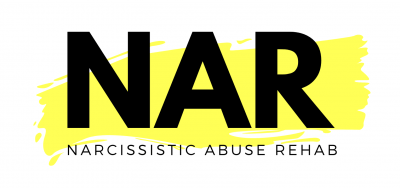






4 Comments
Comments are closed.